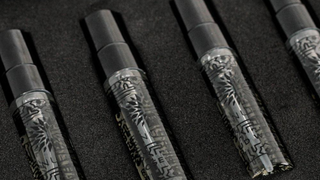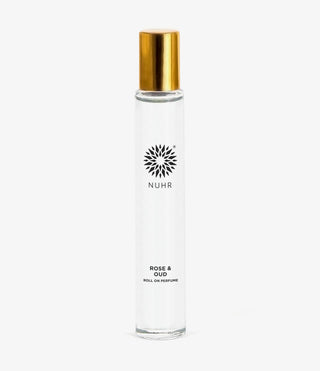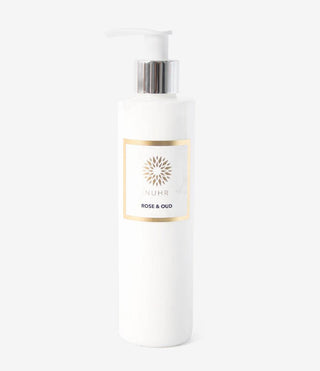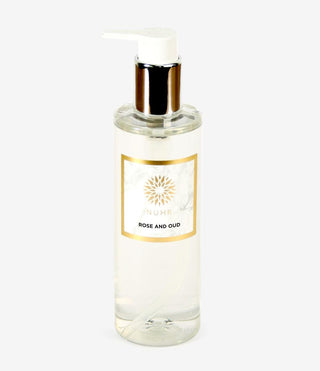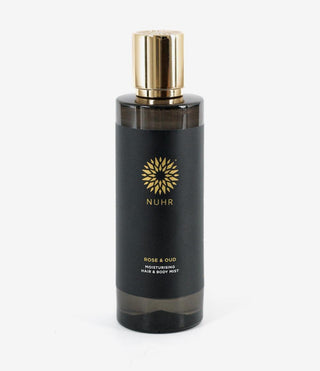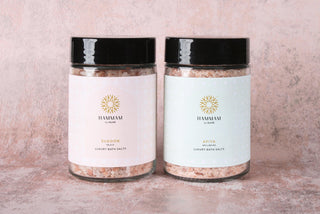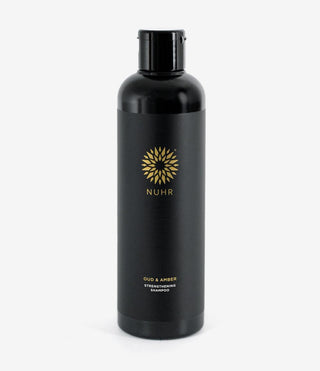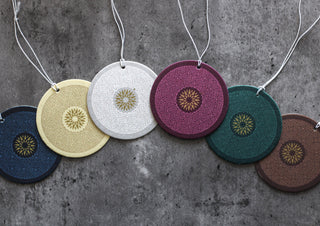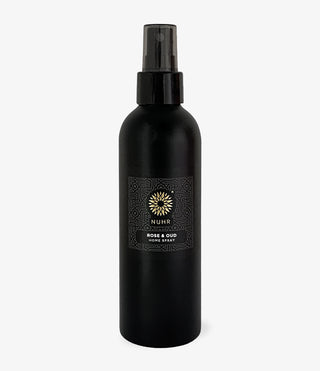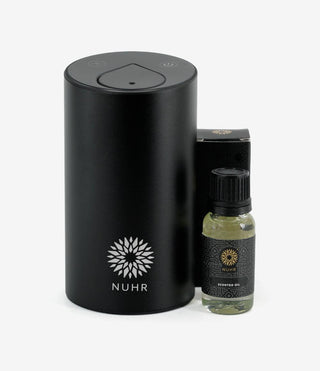
Candles have been around for centuries, and are still a popular option for many people. They come in a wide variety of shapes, sizes, and scents, and can be found just about anywhere. Candles can fill a room with fragrance relatively quickly and don’t require any special equipment.
Wax melts are a newer option and are becoming increasingly popular. They are made of wax that is melted in a special burner, releasing the fragrance into the air.
But which is the better choice?
The decision to use a candle, wax melt, or diffuser really depends on your personal preferences. Let’s get into what’s what and review the advantages of each.
What Are Wax Melts?
A wax melt is similar to a candle, but to release its scent, you gently heat it over a tealight or a lightbulb using a wax melt burner rather than with a wick.
What Is a Diffuser?
A diffuser is a device that disperses essential oils or fragrance into the air to scent a room. It typically uses ultrasonic vibrations, heat, or reed sticks to release the aroma continuously and subtly over time.
Candles vs Wax Melts vs Diffuser: Value and Safety
When it comes to filling your home with a pleasant scent, you have two main options: candles or wax melts. Both have their pros and cons, so it’s important to know which one is right for you.
Candles are a classic choice for many reasons. They’re relatively inexpensive and easy to find. However, they last 4-8 hours, whereas wax melts last anywhere from 12 to 24 hours. If you’re looking for a longer-lasting option, wax melts may be the way to go.
Wax melts are also safer than candles since there’s no open flame. However, they can be more expensive than candles, and some people find them difficult to use.
Wax Melts vs Candles: Ease of Use
With candles, you need to consider the safety of your home much more and place the candles away from anything flammable or where they could be knocked over — and definitely away from pets, children, and anything that could collect soot.
Although this is the case to a certain extent with tealight burners, electric wax melters (or wax melters) come in many different forms, from table-top ones to ones that sit in your plug sockets, to give you greater flexibility. Without a naked flame and needing lower temperatures, electric burners can be used with greater peace of mind.
Soot From Candle Use
We recommend trimming the wick of your candle before each burn to reduce sooting; otherwise, you could end up with a high candle flame and a big mess. But this advice is rarely followed and is not widely known. Drafts around the flame can also cause flickering, which increases soot production.
Wax Melts, however, can be used without naked flames at all with the use of an electric melter, which produces no soot at all. If you use a tealight wax melter, we also always recommend using a 4-hour unscented tealight for safety purposes, which reduces the need for candle maintenance such as trimming the wick, as this often equates to one burning period and therefore single use. In order to retain the heat from the tealight needed to melt the wax, most tealight wax melters are also semi-enclosed, which protects your walls from residues and the flame from any drafts, resulting in a much cleaner burn.
How to Use an Oud Wax Melt in an Oil Burner or Wax Melter
To use an oud wax melt in an oil burner or oud wax melt burner, simply place the melt in the dish and light a candle underneath. The heat from the candle will cause the wax to melt and release its fragrance into the air.
Oud wax melts are perfect for creating a relaxing, soothing atmosphere in your home. Whether you use them on their own or mix them with other fragrances, they're sure to fill your space with a wonderful scent.
Candles vs Diffusers

When it comes to filling your home with the perfect scent, you may be wondering whether candles or electric diffusers or reed diffusers are the way to go. While each option has its own benefits, there are a few key differences between them that may help you decide which is best for you.
For starters, candles typically provide a stronger scent than diffusers. If you’re looking for something that will really fill up your space and make it smell amazing, then candles are probably the way to go. However, if you’re looking for something that’s a bit more subtle, then diffusers may be better suited for you.
Another key difference between candles and diffusers is that candles can take a bit more time to set up. You have to find the perfect spot for them, make sure they’re level, and then light them.
Wax Melts vs Diffusers
Both wax melts and diffusers are flame-free options for adding fragrance to your home, but they offer different experiences. Wax melts release scent more quickly and intensely, making them ideal for those who want an immediate aroma payoff. They're also great for creating custom scent blends by mixing different melts together.
Diffusers, on the other hand, provide a more subtle and continuous fragrance. Many also double as humidifiers and are often used with essential oils for added wellness benefits like stress relief or improved sleep. While wax melts require a warmer, diffusers need regular cleaning and a power source but are lower maintenance once set up.
All About Scent Throw and Intensity
One of the key differences between candles, wax melts, and diffusers is how they distribute scent—this is often referred to as "scent throw." Scent throw can be broken down into two types: cold throw (how it smells before being heated or activated) and hot throw (how it smells when in use).
Candles and wax melts typically offer a stronger and more concentrated hot throw. Once the wax is melted or the candle is lit, the scent intensifies quickly and can fill a room within minutes. Wax melts, in particular, are known for their quick activation and bold fragrance output, making them a favorite for people who want an immediate and noticeable scent.
Diffusers, on the other hand, offer a much more subtle experience. They release fragrance continuously over time, which makes them ideal for background scenting rather than a quick burst. While the scent is gentler, it’s more consistent throughout the day, and works well in smaller or enclosed spaces.
Candles vs Wax Melts vs Diffuser: Sustainability and Waste
As more people consider the environmental impact of their home fragrance choices, it’s important to look at how each option performs in terms of sustainability and waste.
Candles
Candles often come in glass jars, which can be reused or recycled, though this depends on local recycling capabilities and whether the jar is properly cleaned. However, paraffin-based candles are derived from petroleum, which may be a concern for eco-conscious users. Look for soy candles (soy is the best wax for candles) with cotton or wood wicks for a more natural alternative.
Get the most out of your candles by learning how to fix a tunnelling candle.
Wax Melts
Wax melts generate very little waste during use, especially if you opt for refillable or silicone-topped warmers. However, they are often packaged in plastic clamshells or trays, which can add up over time. Choosing melts that use biodegradable or recyclable packaging can help reduce your environmental footprint.
Diffusers
Diffusers come with their own sustainability considerations. While some reed diffuser bottles can be reused or refilled, many are discarded after use. Additionally, plug-in or ultrasonic diffusers typically involve plastic components and require electricity. That said, using essential oils and refillable vessels can reduce waste and support a more sustainable routine.
Frequently Asked Questions
Which home fragrance option lasts the longest?
Diffusers typically last the longest, offering continuous fragrance for weeks or even months. Wax melts last longer than candles per use, but both require more frequent replacement.
Are wax melts better for people with allergies?
Yes, especially if they’re made from all-natural soy wax and are phthalate-free. Wax melts don’t require alcohol or harsh chemicals, which are sometimes found in diffusers or paraffin candles.
Can I mix scents with wax melts?
Absolutely. Wax melts are easy to mix and match, allowing you to create custom blends based on your mood or season.
Do diffusers need a lot of maintenance?
Ultrasonic and electric diffusers do need regular cleaning to prevent mold and buildup. Reed diffusers require occasional flipping of the reeds but are otherwise low maintenance.
Are candles bad for indoor air quality?
Candles can produce soot and release small amounts of indoor air pollutants, especially if made with paraffin wax or if the wick isn’t trimmed. Using soy or beeswax candles with proper care minimizes this risk.
What’s the safest option around kids or pets?
Wax melts and diffusers are generally safer than candles because they don’t use an open flame. However, always keep fragrance products out of reach of children and pets regardless of type.


